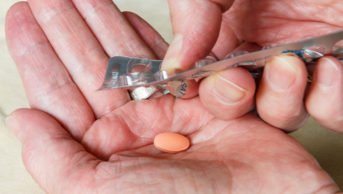
Shutterstock.com
Higher ten-year risk thresholds should be used when recommending statins for the primary prevention of cardiovascular disease (CVD) and guidelines should consider different recommendations based on sex, age group, and statin type, study results published in Annals of Internal Medicine (3 December 2018) have concluded[1]
.
Researchers carried out a quantitative benefit-harm balance modelling study in order to identify the expected risk above which statins provided a net benefit. The target population of the study was people aged 40—75 years with no history of CVD.
The study focused on four low or moderate-dose statins — atorvastatin, simvastatin, pravastatin and rosuvastatin — which are frequently prescribed for primary prevention of CVD. The study excluded high-dose statins.
By projecting disease-related events and drug-related adverse events, such as myopathy, hepatic dysfunction and incident diabetes, over time while accounting for competing mortality, the researchers found that statins were likely to provide net benefits at substantially higher risk thresholds than the 7.5–10.0% thresholds to which most guidelines refer.
The results showed that younger men had net benefit at a lower ten-year risk for CVD than older men, at 14% for men aged 40–44 years compared with 21% for men aged 70–75 years.
In women, the risk required for net benefit was higher than for men, at 17% for women aged 40–44 years and 22% for women aged 70–75 years.
In addition, they found that atorvastatin and rosuvastatin provided net benefit at lower ten-year risks than simvastatin and pravastatin.
The researchers concluded that current guidelines do not reflect the fact that statins provide net benefits at higher ten-year risks for CVD, and that the level of risk at which net benefit occurs varies considerably by age, sex and statin type.
Adjustment of the guidelines would substantially improve selection of persons eligible for statin therapy for primary prevention of CVD, they said.
In 2014, the National Institute for Health and Care Excellence lowered the threshold for prescribing statins from a ten-year risk of cardiovascular events of 20% to 10%. This fuelled controversy over statins as a primary prevention of CVD because the new threshold included almost all men aged over 60 years and all women aged over 75 years.
References
[1] Yebyo, H, Aschmann H, Puhan M et al. Finding the balance between benefits and harms when using statins for primary prevention of cardiovascular disease: a modeling study. Ann Intern Med 2018. doi: 10.1136/bmj.k3359


